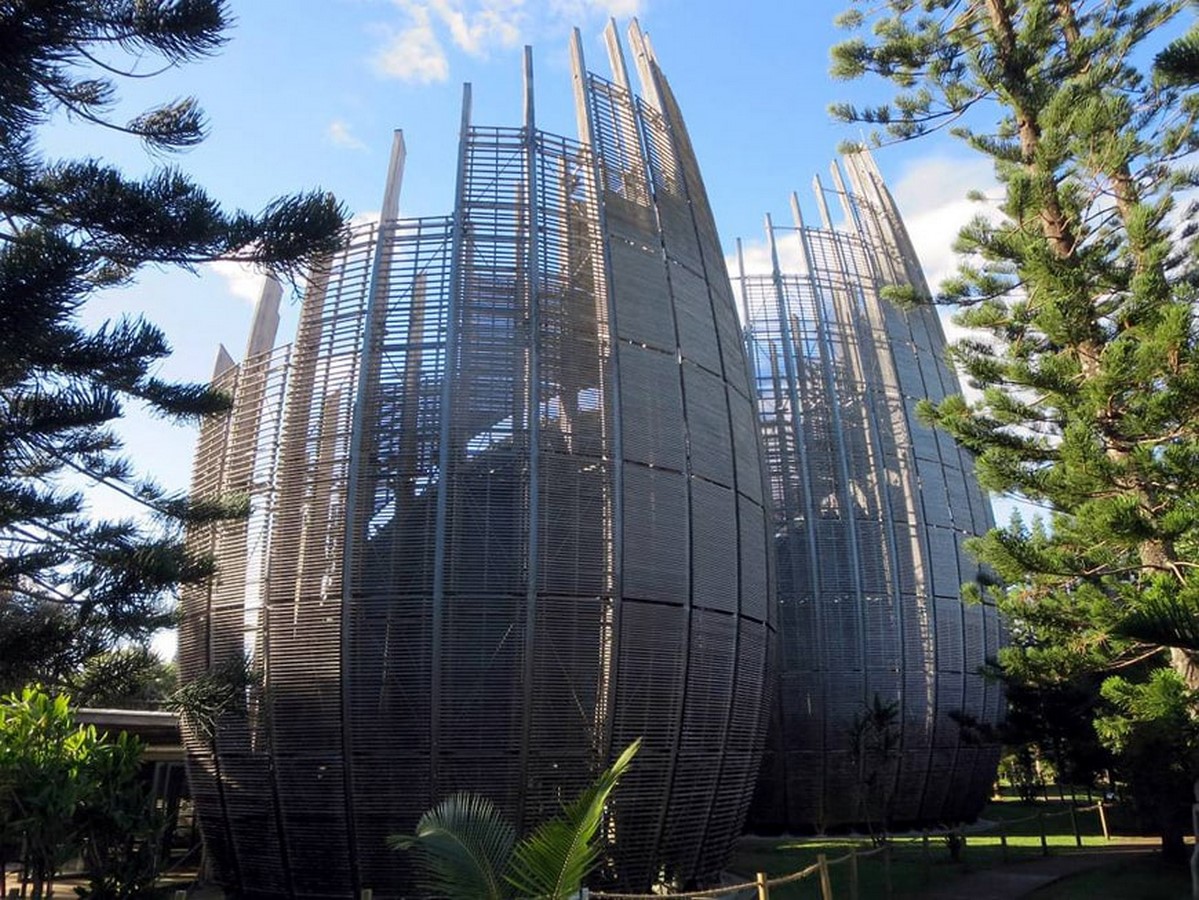A Pritzker Prize-winning Italian architect Renzo Piano is known for utilizing modern solutions in his designs, but he never limited himself in expanding his views that are seen in the Jean-Marie Cultural Center, the project which Renzo Piano was assigned to after winning the 1991 invite-only competition. Jean-Marie Tjibaou Cultural Centre is dedicated to the leader who led the Independence Movement, Jean-Marie Tjibaou, who pictured a cultural center that had the artistic heritage and linguistics of the Kanak civilization.
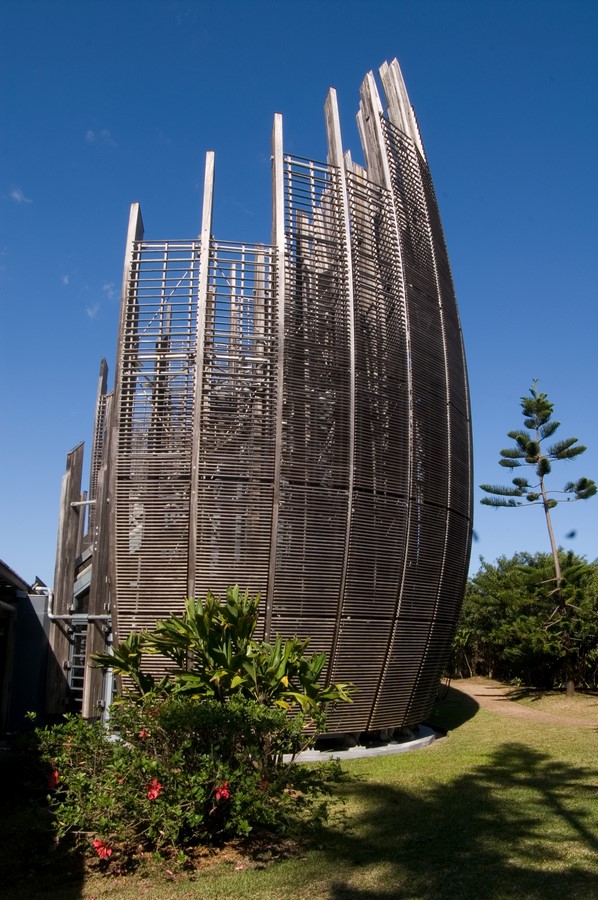
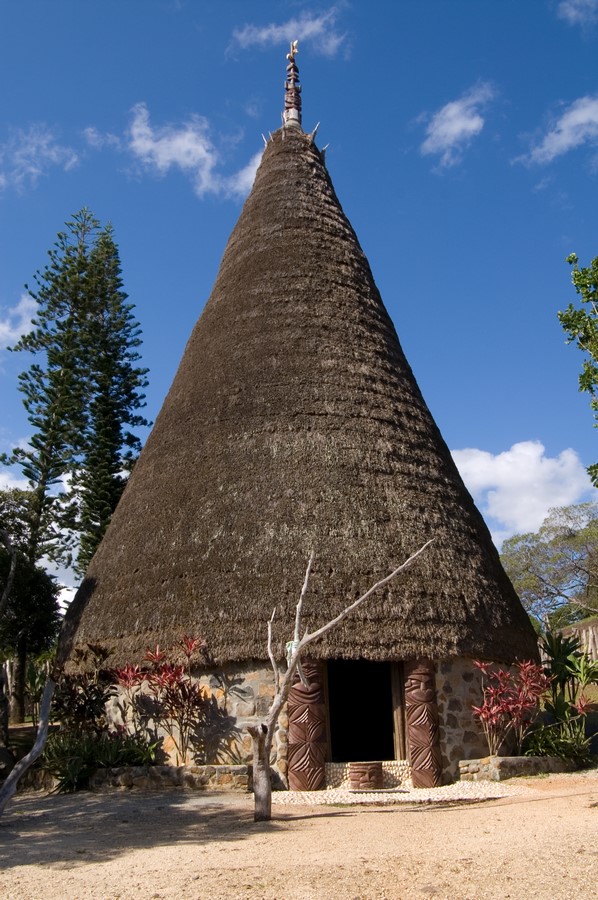
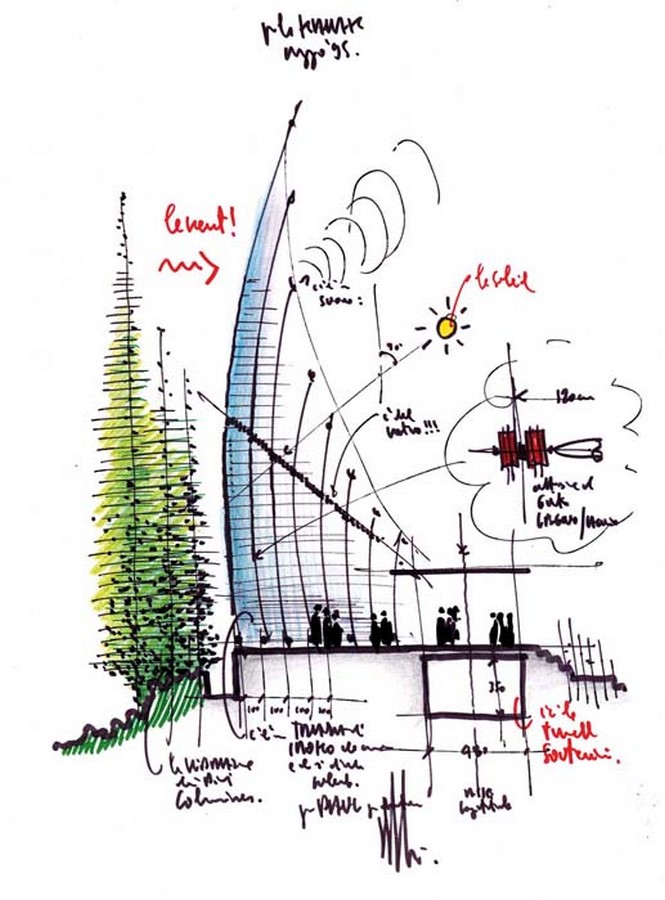
This 1998 structure stands beautifully on the Tinu Peninsula, which is around 8 kilometers from the Historic Centre of Noumea (the capital city of New Caledonia) and displays the culture of New Caledonia, and the Kanak culture both. New Caledonia’s climate affected the design approach and made extreme heat of the subtropical sun one of the important factors.
Let’s look at the design by Renzo Piano, which is also considered a symbol of harmony between the public of New Caledonia and the people of France.
Design Philosophy
The Center, enclosed by water from three sides by a lagoon and the Pacific Ocean, consists of a group of small huts, also called cases, and trees. The layout of the building is designed semi-circular, inspired by the historic cone-shaped hut, known as Grand Case. The slender ribbed structures focused on Kanak Civilization from the exterior while the interior portrayed contemporary style having modern amenities.
The huts are vertical cylinders placed around a centrally located rectangular axis in three clusters. Besides, one more concept was kept at the forefront, which is naturally ventilated design. And the practicality of the design was evaluated beforehand using computer software and models.
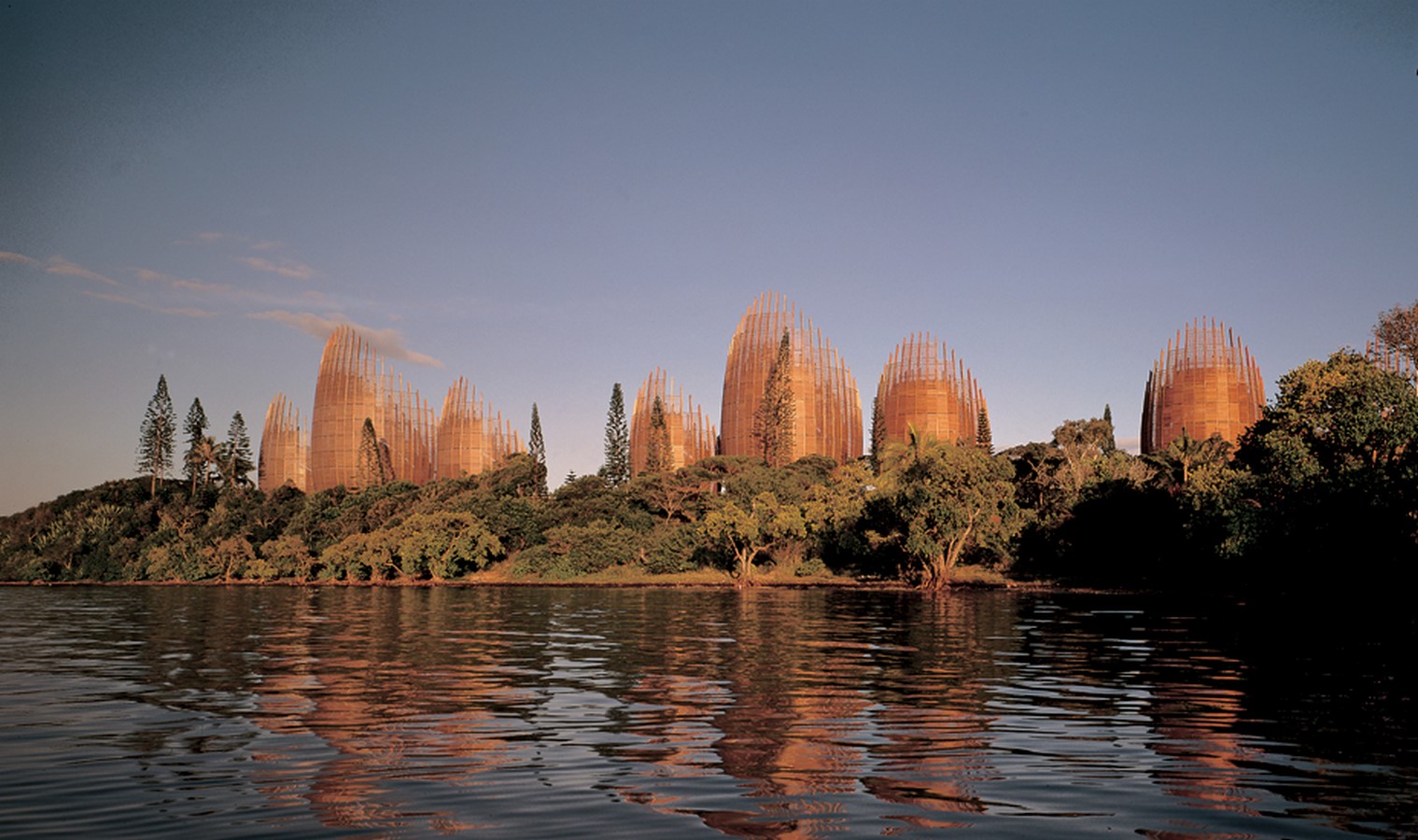
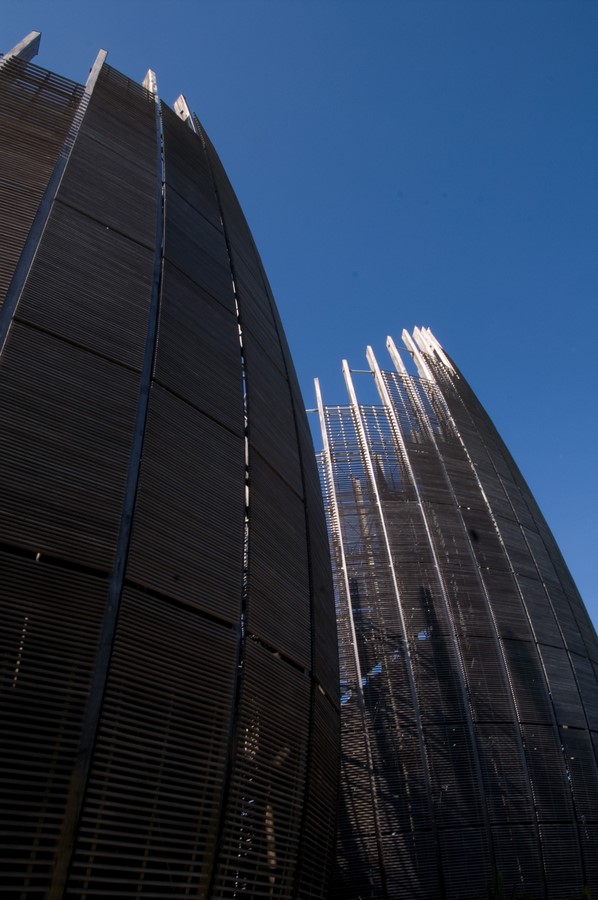
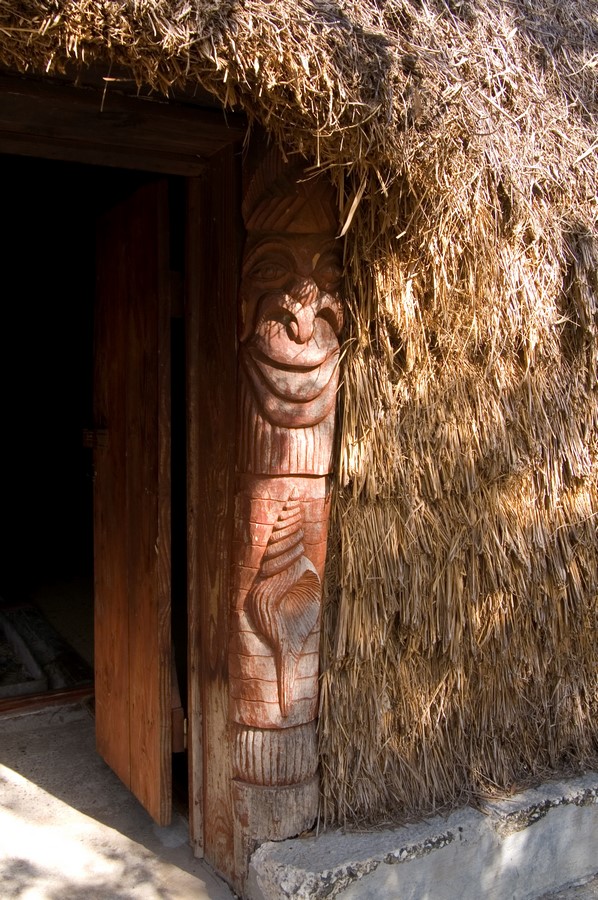
Concept Planning
Spreading over 8,550 square meters, the building plans had the vision to link the landscape of the area and the built environment through Kanak traditions. The cultural center houses 10 semi-circular pavilions surrounded by a landscape path consisting of chains of vegetative cover.
These monumental airy shells are of varying heights ranging from 20 meters to 28 meters, forming a stunning skyline over the Pacific shore. In addition to that, the floor area starts from 55 square meters and goes up to 140 square meters, all connected by an extended spine, a 250-meter footpath that gives access to the other functional spaces of the project.
The complex has three groups comprising exhibition space in the first group, conference room, library in the second, and the third has music, dance, and applied art studios. The center has a 400-seater auditorium, 4500- seater open-air theatre, and pavilions for workshops and temporary exhibitions as well.
The Jean-Marie Tjibaou Cultural Centre is one of the intelligent buildings considering innovative passive ventilation system, integration of the enclosed and outer spaces together with the shells that beautifully displays the texture of the trees and the effect that the shells create is organic, and its incompleteness reflects that Kanak culture is still evolving from its roots.
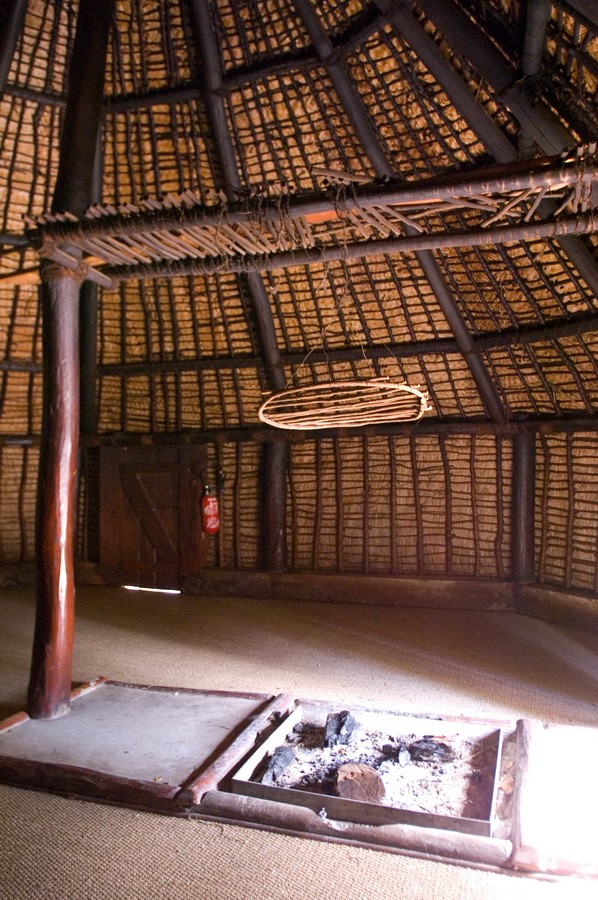
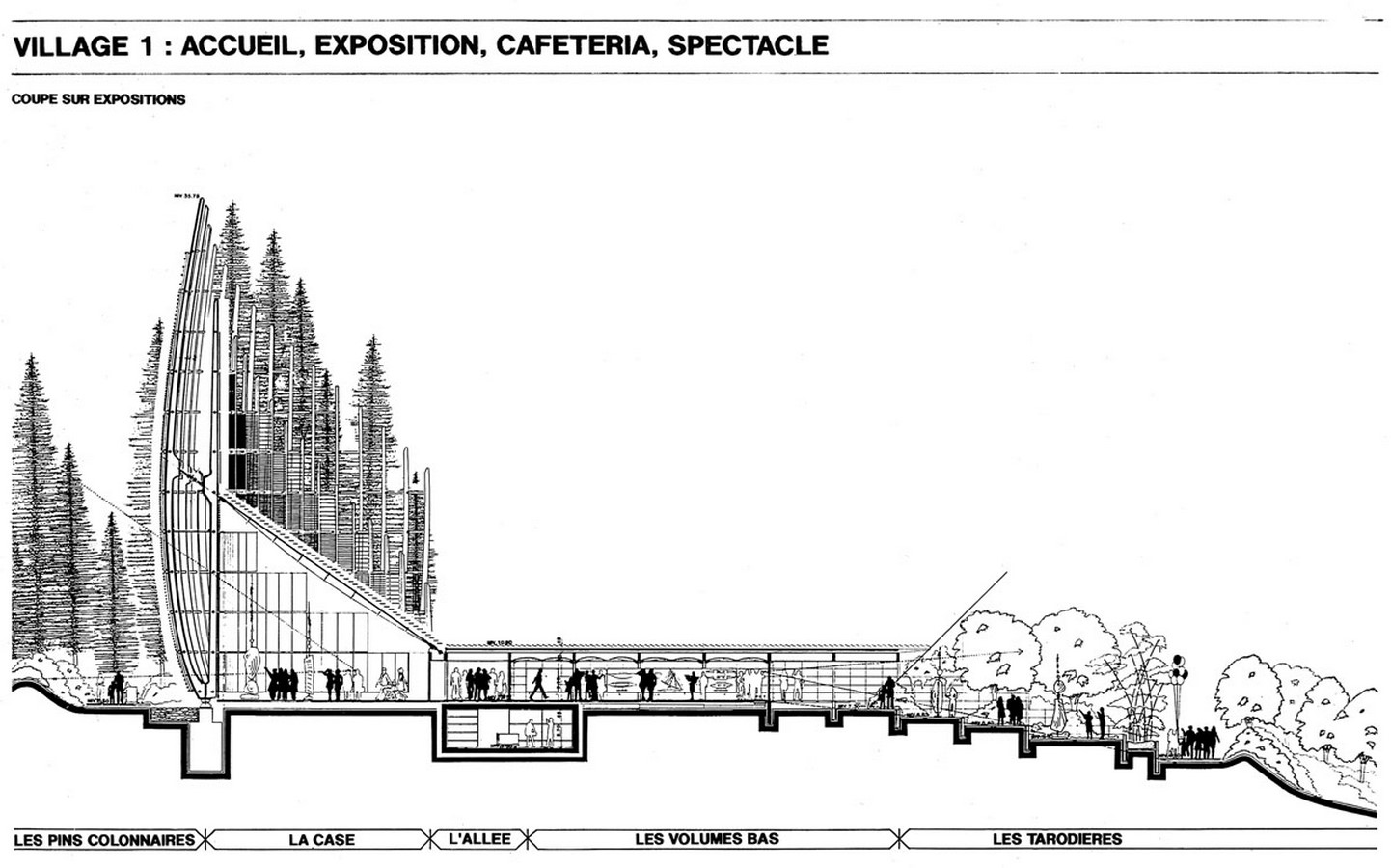
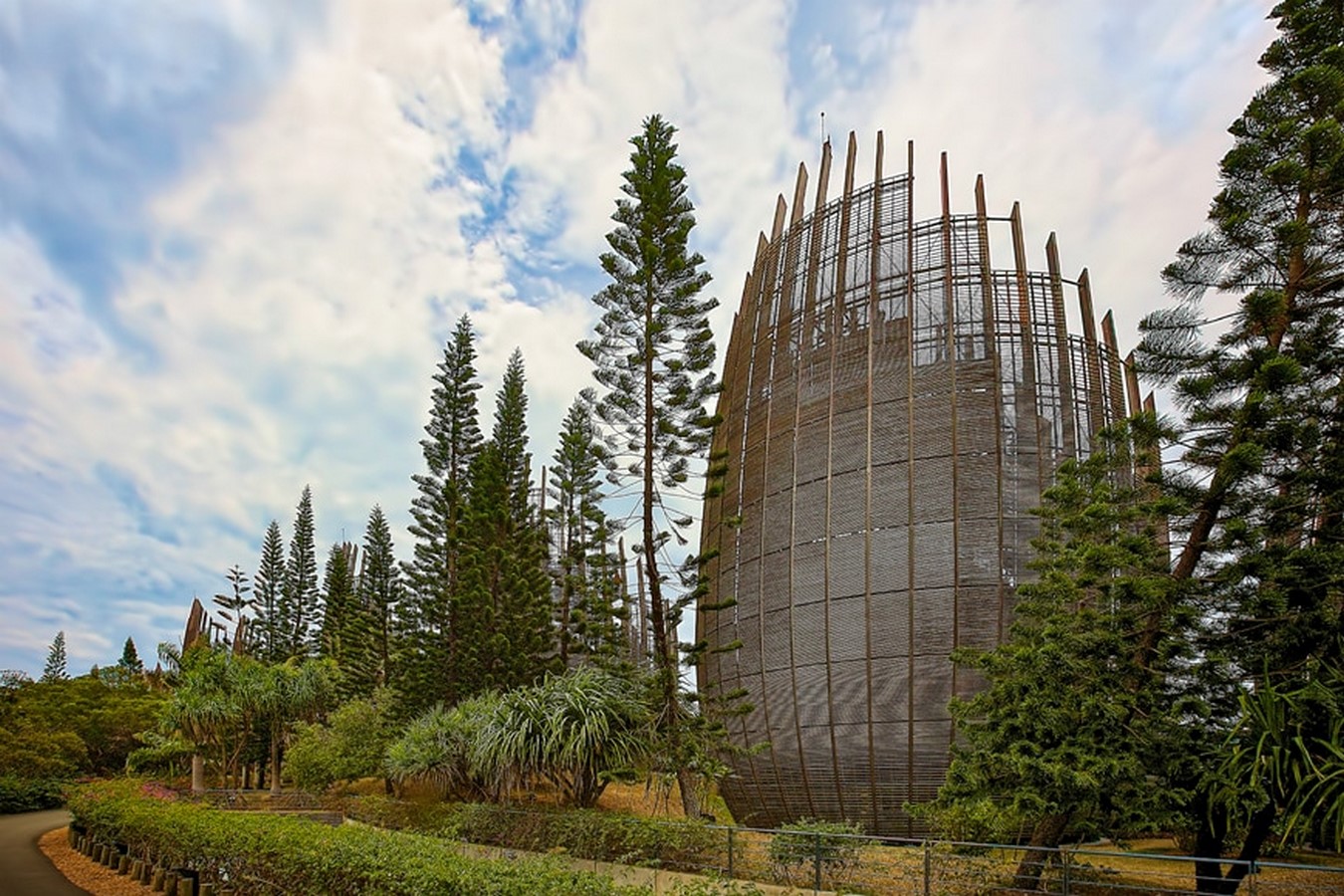
Material Used
Piano believed in studying and knowing the materials well and then using them to the best of their abilities. This project utilized low-maintenance material such as African Iroko wood, which was termite repellent and reminded the look of the traditional huts. Most of the materials were prefabricated in France and then brought on the site as per the decision made by Piano considering many factors. Some other durable materials used were laminated timber, corrugated aluminum, steel, bamboo, and glass.
Structure
Instead of using traditional vegetable fiber as the prime material for the exterior, the buildings were made up of wood ribs and slats. The apertures of external facades were angled such that it limited the prevailing wind well. In addition to this, the double skinned walls have vertical columns of Iroko wood on the interior while curved wooden members were used on the exterior, and the structure was made rigid with the diagonal and horizontal steel rods. Consequently, this double external façade helped in air circulation through the slatted wood and provided protection from the Caledonia’s weather as needed as the traditional Kanak people used to do.
Landscape
The area, where the center is constructed, is blessed with lush green including coniferous and non-coniferous species such as Agathis trees, mangroves, fig-trees, cypresses, araucarias, to name a few. Landscape architects Desvigne & Dalnoky joined hands with Piano to re-create the bond between the nature of Melanesian cultures, and the village through the center’s landscape design. The clusters of huts were specifically planned to provide open spaces for the Kanak public, where their daily activities, and importantly their social lives, could take place.
An environmental approach to sustainability
Jean-Marie Tjibaou Cultural Centre is a project that follows the route of sustainable design instead of modern technical systems. For example, Renzo Piano decided on taking up African Iroko wood rather than local wood for the external ribs of the huts. Even though he was highly criticized for the same, he held onto it saying durability, low-maintenance and other properties of the chosen wood would work well in the tropical climate.
- Passive Cooling, Orientation, and Wind
The passive cooling system is enabled in the cultural center by its conical shape, louvers, the skin of laminated wood, and fixed windows. Along with that, the double façade element allows the air circulation in between the slatted wooden layers, and the flexible louver system adjusts the flow of air according to the wind speed.
Furthermore, the pavilions have every façade designed based on the weather as well as the surroundings. The façade facing the south was planned to screen the building from strong wind and storm expected to occur from the sea during the monsoon season, on the other hand, the façade facing the north was made open, transparent, and penetrable.
The shape of the building also creates a Stack effect and Venturi effect keeping the temperature inside habitable. Next up are the corridors which are kept covered without any sidewalls and have metal, wood, and glass louvers to let natural ventilation keep the area cool while avoiding overheating by direct sunlight.
- Solar radiation control and lighting
The Cultural Center uses both natural and artificial lighting. The internal spaces are washed up by natural lighting through the bamboo walls while the vertical stature of the external façade works as a blind for the rooftop, shading it from the sun that also helps in controlling the internal temperature. Additionally, the aluminum screens possessing high reflectivity tosses a great number of solar radiation.
